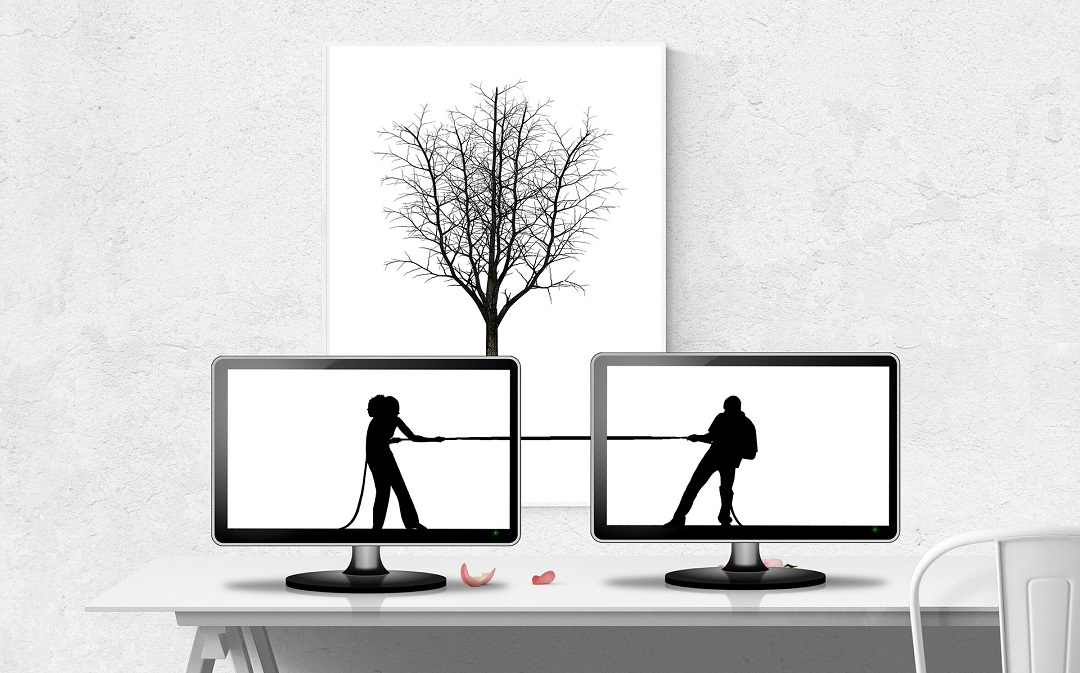Conflict management styles are part of the Thomas-Kilmann model which is popular among HR specialists all around the globe. The theory postulates that there are 5 manners in which one can deal with conflict, so-called conflict management styles.
This model is very useful for solving conflicts, and arguments and arriving at the best possible solution in the workplace. Conflicts are one of the biggest obstacles every company experiences on a daily basis, and efficiently solving them is necessary for long-term prosperity.
In this article, we’ll explore conflict management styles, how to choose the most effective one for each situation, and offer insights on identifying your preferred style. To truly excel in conflict management, it’s crucial to understand your inherent strengths. The HIGH5 strengths assessment can provide valuable insights into your natural abilities, helping you leverage them in conflict situations. By identifying your top strengths, you can better navigate conflicts and choose the most suitable management style for each unique scenario.
What is Conflict Management Style?
Conflict management style is a way of managing or a strategy used for dealing with conflicts, disputes and disagreements. There are 5 most effective conflict management styles: accommodating, avoiding, compromising, competing, and collaborating. Which style a person uses depends on 2 dimensions – assertiveness and cooperativeness.

The first dimension shows to what degree a person wants to satisfy his own needs, and the latter shows how much he cares about satisfying others.
All 5 conflict management styles lie somewhere at the intersection of these two dimensions. Each conflict calls for a different conflict management style.
That’s why selecting the most appropriate style for your conflict management for every given conflict is a valuable skill that every manager should possess.
Despite the importance of flexibility, many managers default to a single conflict management style for all situations. This one-size-fits-all approach is far from optimal and can lead to numerous problems. To avoid this pitfall, it’s crucial to understand your natural strengths and how they influence your conflict management tendencies. The HIGH5 strengths assessment can provide invaluable insights into your innate abilities, helping you recognize when you’re relying too heavily on a single style and guiding you towards a more balanced approach. By leveraging your unique strengths, you can adapt your conflict management style more effectively to each specific situation.
Pro Tip From HIGH5
Leverage your strengths in conflict management by first identifying them. Use tools like the HIGH5 assessment to understand your natural abilities, then consciously apply these strengths to different conflict scenarios. For example, if one of your top strengths is ‘Empathy,’ you might excel in collaborative or accommodating styles.
The 5 Most Effective Conflict Management Styles
Here is the list of the 5 most effective styles for conflict management. They include some interesting angles and techniques for conflict management which will definitely help you with resolving arguments and conflicts.
Accommodating
An accommodating conflict management style is when you move on as quickly as possible and allow another person to have their way. At first glance, it might seem that only pushovers might use such a style, but in reality, it is one of the most effective conflict management styles.
It works best when you don’t feel that the issue is worth your time, energy, and resources to resolve in any other manner. It allows you to focus on the more important issues that are actually worth your time.
Pros: Irrelevant, easy issues can be solved in an instant. As a result, leaders can be seen as easy to work with and emphatic.
Cons: Bigger and more important problems cannot be solved by this conflict management style. Additionally, managers can be seen as “pushovers” and not worthy of respect.
Avoiding
Avoiding style is when you try to avoid the conflict instead of solving it. For example, you can simply ignore the problem, or try to avoid it by pushing the deadline as far as possible or even reassigning people to different projects or departments.
This conflict management style works great when you think that getting more time and allowing involved parties to distance themselves from the issue will help to solve it down the line. That being said, it’s more of a bandaid than an actual solution.
Pros: Time and distance created by avoidance can help involved parties to get a new perspective on the issue and ultimately solve it later on. In some cases, it can also make employees respect the manager more, as they see that a manager is giving them time to think things through.
Cons: Issues will not be solved just by avoidance. In most cases, avoiding a problem will only make it grow larger and larger over time. Additionally, managers can be seen in a negative light because they’re just ignoring issues instead of facing them as soon as possible.
Compromising
A compromising conflict management style is when both sides give up something to arrive at an agreement. It’s sometimes referred to as “lose-lose” because both sides involved don’t get what they wanted.
However, compromising can be a very strong tactic when you have to solve the issue now. Maybe the deadline is coming, or maybe the problem just needs to be dealt with, whatever the reason, compromising is very effective. That being said, compromising can ruin relationships and lead to resentment.
Pros: Compromising is great because it allows solving problems quickly. Both parties involved get at least a part of what they initially wanted, and it makes people understand others’ perspectives on the issue.
Knowing what another party had to sacrifice and what you had to sacrifice to reach an agreement builds a precedent for a future relationship.
Cons: While everyone involved got at least something, at the same time no one got everything that they wanted. It can result in people feeling resentful and angry that they had to give up too much, or that it wasn’t fair.
Competing
Competing conflict management style means that you’re not backing off and will stand your ground for as long as required. If you’re using this style, you won’t accommodate, avoid or compromise, but you will fight until your demands are accepted.
This conflict management style is best used when an unpopular decision that goes against the grain has to be made.
Pros: Managers using the competing conflict management style are seen as strong and capable. If you’re not backing down from your ideas and beliefs, it signals competence and courage. It can also be good to use this style to prove yourself in new environments, even though it can backfire.
Cons: The biggest drawback of this conflict management style is that if your decision is wrong, you’ll be condemned for it for a long time. If you vetoed everyone else and were adamant about your decision, it must be correct.
Even if your decision was correct and ultimately led to great results, you might be seen as a tyrannical leader who doesn’t care about what others think.
Collaboration
Collaboration conflict management style is the best for sustained, long-term results. Because everyone gets what they want, it’s a win-win solution. However, if it were that easy, no one would ever use other conflict management styles, which isn’t true.
Collaboration requires immense resources, and all parties must work together for a long time to reach a solution that satisfies everyone involved.
Only after dozens of meetings and hours of dialogue between the parties, such a conclusion can be attained. In most cases, it’s simply impossible to try collaboration and other conflict management styles are more effective.
Pros: Everyone wins, and it builds a foundation for a long-term relationship and success. If two parties collaborated before, it’s more likely that they will try to collaborate in the future.
Cons: Collaboration is too time and energy-consuming to be a viable style for most problems. It’s the ideal, but real life rarely offers circumstances where such an ideal can be applied.
Other common conflict management styles are:
- Conflict resolution
- Acknowledging the problem
How to Choose a Conflict Management Style?
According to The Thomas Kilmann model, assertiveness and cooperativeness are two dimensions that determine which conflict management style a person is going to choose.
Assertiveness shows to what level a person wants to satisfy his own needs, while cooperativeness indicates to what degree he wants to satisfy the concerns of others.
If you only care about your own needs, you’re going to choose the competitive style, if you care about your own needs and the other person’s, you’re going to choose collaboration.
If you don’t care about your own needs and other person’s needs, you will select avoidance, and if you only care about another person’s needs you’re going to opt-in for accommodating. The compromising style is in the very center of both dimensions.
To choose your favorite conflict style, you must think about what you value the most. Do you only care about your needs, or do you also regard the concerns of others?
Pro Tip From HIGH5
Create a ‘Conflict Strength Map’ by listing your top five strengths from the HIGH5 assessment and brainstorming how each strength can be applied to different conflict management styles. This personalized tool can guide you in selecting the most effective approach for each unique conflict situation.
How To Be Comfortable with Conflict? Solutions & Techniques
Conflicts can be anxious and stressful even for the least neurotic people. Some people prefer to give something important to them just to avoid a conflict. Such behavior can be fine once or twice, but in the long term, it can show itself to be detrimental.
That’s why it’s important to learn how to be comfortable with conflict. The first step is to not avoid conflict. It might seem paradoxical, but trying to resolve issues as they come can reduce stress.
Even if you’re using the avoidance conflict management style, you can still try to give yourself time and distance to think about it, instead of completely avoiding it. It’s also helpful to talk to all sides involved.
If you’re missing an important piece of an issue, chances are it’s going to cause you stress and make it more difficult to resolve the issue. Imitigate it, try talking to every party involved and get their point of view.
It will give you a complete picture of the problem and help to handle it accordingly. Finally, after the decision is made and the issue is solved, check up on each party.
Find out how they’re feeling about it and talk about how the final solution was reached. It will give you intel that you can use for self-reflection, which will help you to handle conflicts better in the future.
Conflict Management Assessments
It’s very useful to know which conflict management style a person uses the most. To find it out, a manager can take a conflict management assessment, that shows which styles he tends to rely on the most.
Most commonly, there are 15-30 questions that are rated on a 5-point Likert scale, where:
- Strongly Disagree
- Disagree
- Neither agree nor disagree
- Agree
- Strongly agree
An example of such an assessment that you can use is presented in the following section.
Conflict Management Quiz – Question, Answers
- I prefer peace over arguments.
- I like to find the mid-point solution between the extremes.
- If there’s a disagreement, I try to talk to everyone involved and reach the best solution for everyone.
- I don’t share what I think if my opinion contradicts what is being said.
- I try to get away from arguments as quickly as possible
- I know that I’m right and will hold my ground until others start believing me.
- Arguments cause anxiety and I do my best to avoid them.
- I try my best to meet the expectations of others.
- I don’t cut off ties if there’s a disagreement but rather try to keep the conversation active.
- I love finding the mid-way solution.
- I love winning arguments.
- I try my best to see the perspectives of everyone involved.
- I don’t care about being right because it’s less stressful than arguing.
- Arguments are a waste of time and should be taken care of as quickly as possible.
- I like to argue until others agree that I’m right.
Scoring:
- Questions 5, 4, and 7 indicate an Avoidant style
- Questions 1, 8, and 13 indicate an Accommodating style
- Questions 2, 10, and 14 indicate a Compromising style
- Questions 6, 11, and 15 indicate a Competing style
- Questions 3, 9, and 12 indicate a Collaborative style
Add up scores of each management style to see which styles you use most often.
Conflict Management Skills
Conflict management skills are essential tools that help you navigate through conflicts and arguments efficiently, allowing you to achieve the best possible outcomes. These skills are often rooted in your innate strengths, which can be identified and harnessed through assessments like the HIGH5 test. By understanding your unique strengths profile, you can develop a personalized approach to conflict management that feels natural and authentic. For instance, if ‘Problem Solving’ is one of your top strengths, you might find that you excel in situations that require creative solutions to conflicts. The HIGH5 assessment not only helps you identify these strengths but also provides insights on how to leverage them effectively in various conflict scenarios, enabling you to turn potential challenges into opportunities for growth and collaboration.
Some of these skills are communication, negotiation, active listening, collaboration, compromise, emotional intelligence, and so on.
If you possess these skills, you are more likely to jump straight into a conflict instead of avoiding it. Finally, you’re most likely to achieve your preferred outcome. Here are two main conflict management skills:
Communication Skills
Communication skills are somewhat of an umbrella term for many smaller conflict management skills, but it all boils down to effective and professional communication.
At the very core, it means that you should always lay out clearly what you’re thinking, and respect the opinion of another person. To do so, be conscious of your body language and the words you’re using.
Negotiating Skills
Negotiating skills specifically help you to reach your preferred outcome. If you want to find a mid-way point between you and another party, possessing great negotiating skills can result in a 70-30 or even 80-20 split, while still leaving another party satisfied.
It includes skills like patience that will stop you from agreeing too soon, active listening, which helps you to understand what another person really wants, and persuasion, which helps to get a more favorable result.
Pro Tip From HIGH5
Enhance your conflict management toolkit by aligning your skills development with your top strengths. If the HIGH5 test reveals ‘Communication’ as a key strength, focus on honing advanced communication techniques like active listening and non-verbal cues interpretation. This targeted approach will make your skill development more effective and enjoyable.
Main Differences Between Conflict Management Skills Vs. Conflict Management Styles
Conflict management skills are those that you can apply in every conflict situation, regardless of the situation. On the other hand, conflict management styles are more of a strategy that you select to use for a specific conflict and situation.
For a quick analogy, imagine that your selected conflict management style is a tactic of warfare, while your conflict management skills are individual soldiers and machinery that helps you to fulfill the tactic to its fullest.
Briefly, you’re most likely to use all of your conflict management skills at every given conflict, while you have to choose the best conflict management style for a specific conflict.
Because of that, it’s important to keep tailoring both, styles and skills to achieve the best results. If you possess the best conflict management skills but are always selecting the wrong style, you’re deemed to fail. That being said, if you always select the best possible conflict management style for every conflict, but don’t have the necessary skills to execute it properly, you’re also deemed to fail.
Conflict Management Styles FAQ
What are Conflict Management Styles for Teachers?
Conflict management styles for teachers are:
- Accommodating – giving to another person what he wants
- Avoidance – avoiding the conflict for as long as possible
- Competing – standing your ground until your solution is accepted
- Compromising – trying to find a midway point between parties
- Collaborating – trying to find the best solution that is satisfying to both parties
How to Stay Calm in a Conflict Situation?
In order to stay calm in a conflict situation, it’s best to give yourself time and distance. This way you can think things through carefully and deliberately and avoid making mistakes.
However, if you cannot escape a conflict, then try to honestly listen to what another person is saying. Knowing exactly what is demanded can make it less stressful and help you to remain calm.
Avoiding Conflict Style Examples
There’s a project deadline tomorrow, but two leading parties cannot agree on one aspect of the project. The manager pushes the deadline two days later and allows both parties to work separately for this time period. The time and space were created to allow both parties to finally arrive at an agreement.







